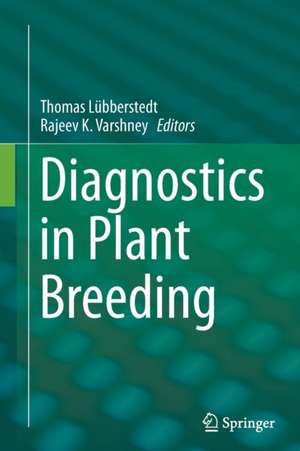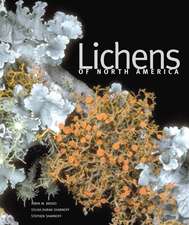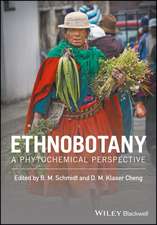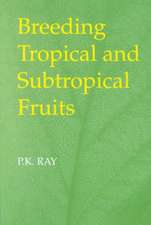Diagnostics in Plant Breeding
Editat de Thomas Lübberstedt, Rajeev Varshneyen Limba Engleză Paperback – 7 mar 2015
| Toate formatele și edițiile | Preț | Express |
|---|---|---|
| Paperback (1) | 1228.29 lei 6-8 săpt. | |
| SPRINGER NETHERLANDS – 7 mar 2015 | 1228.29 lei 6-8 săpt. | |
| Hardback (1) | 1241.73 lei 6-8 săpt. | |
| SPRINGER NETHERLANDS – 15 mar 2013 | 1241.73 lei 6-8 săpt. |
Preț: 1228.29 lei
Preț vechi: 1497.92 lei
-18% Nou
Puncte Express: 1842
Preț estimativ în valută:
235.06€ • 244.50$ • 194.06£
235.06€ • 244.50$ • 194.06£
Carte tipărită la comandă
Livrare economică 12-26 aprilie
Preluare comenzi: 021 569.72.76
Specificații
ISBN-13: 9789400794733
ISBN-10: 9400794738
Pagini: 540
Ilustrații: XV, 521 p. 76 illus., 32 illus. in color.
Dimensiuni: 155 x 235 x 28 mm
Greutate: 0.75 kg
Ediția:2013
Editura: SPRINGER NETHERLANDS
Colecția Springer
Locul publicării:Dordrecht, Netherlands
ISBN-10: 9400794738
Pagini: 540
Ilustrații: XV, 521 p. 76 illus., 32 illus. in color.
Dimensiuni: 155 x 235 x 28 mm
Greutate: 0.75 kg
Ediția:2013
Editura: SPRINGER NETHERLANDS
Colecția Springer
Locul publicării:Dordrecht, Netherlands
Cuprins
Section 1. Introduction.- Chapter 1. Diagnostics in plants; T. Lübberstedt.- Chapter 2. Non-DNA biomarkers; Christin Falke.- Section 2. Identification of quantitative trait polymorphisms (QTPs).- Chapter 3. Gene identification: forward genetics; Qing Ji.- Chapter 4. Gene identification: reverse genetics; George Haughn.- Chapter 5. Allele re-sequencing technologies; Torben Asp.- Chapter 6. Association studies; Yongsheng Chen.- Section 3. Validation of QTPs.- Chapter 7. TILLING; Gunter Backes.- Chapter 8. Gene Replacement; Paul Hooykaas, Sylvia de Pater.- Section 4. Conversion of QTPs into Functional Markers.- Chapter 9. SNP genotyping technologies; Bruno Studer.- Chapter 10. INDEL genotyping technologies; Toshihiko Yamada et al.- Chapter 11. Sequencing for genotyping; Rajeev Varshney.- Section 5. Development of Non-DNA Biomarkers.- Chapter 12. Methylation-based markers; Emidio Albertini, Gianpiero Marconi.- Chapter 13. RNA; Stefan Scholten.- Chapter 14. Metabolites; Olga Zabotina.- Section 6. Deposition of Diagnostic Marker information.- Chapter 15. Plant Genetic Databases; Carolyn Lawrence.- Section 7. Statistical considerations.- Chapter 16. Epistasis, QTP x environment interactions, and pleiotropy: value of a FM; Everton Brenner.- Section 8. Applications in plant breeding.- Chapter 17. Parent selection – usefulness; Adel Abdel-Ghani.- Chapter 18. Variety registration and protection; David Lee et al.- Section 9. Examples.- Chapter 19. Maize; Mingliang Xu et al.- Chapter 20. Rice; Yongzhong Xing et al.- Chapter 21. Traits; Birgit Arnholdt-Schmitt, Helia Cardoso.
Textul de pe ultima copertă
“Diagnostics in Plant Breeding” is systematically organizing cutting-edge research reviews on the development and application of molecular tools for the prediction of plant performance. Given its significance for mankind and the available research resources, medical sciences are leading the area of molecular diagnostics, where DNA-based risk assessments for various diseases and biomarkers to determine their onset become increasingly available. So far, most research in plant genomics has been directed towards understanding the molecular basis of biological processes or phenotypic traits. From a plant breeding perspective, however, the main interest is in predicting optimal genotypes based on molecular information for more time- and cost-efficient breeding schemes. It is anticipated that progress in plant genomics and in particular sequence technology made recently will shift the focus from “explanatory” to “predictive” in crop science. This book assembles chapters on all areas relevant to development and application of predictive molecular tools in plant breeding by leading authorities in the respective areas.
Caracteristici
Comprehensive compilation of methods and concepts related to genomics – assisted plant breeding Detailed description of approaches relating to diagnostic marker development in plants Three chapters summarize available functional markers in relevant crop species







